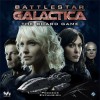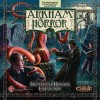
letherunner
gamer level 2
394 xp
394 xp
followers
4
4
Use my invite URL to register (this will give me kudos)
https://boardgaming.com/register/?invited_by=letherunner
profile badges
...
...
...
...
recent achievements

Supporter
Give 10 hearts (loyalty points) to a single game
Give 10 hearts (loyalty points) to a single game

Amateur Grader
Grade 10 more reviews or tips by clicking "Yes" or "No" in response to the question "Was this helpful?"
Grade 10 more reviews or tips by clicking "Yes" or "No" in response to the question "Was this helpful?"

Rated 5 Games
Rate 5 games you have played.
Rate 5 games you have played.

Gamer - Level 2
Earn Gamer XP to level up!
Earn Gamer XP to level up!















Arkham Horror: The Dunwich Horror
This expansion to Arkham Horror (AH) adds a new town board–the titular Dunwich. In game, you access Dunwich from Arkham (and vice versa) by train. Dunwich Horror (DH) adds a raft of new characters, items, monsters (including Ancient Ones) and skills which are mostly well-balanced and enjoyable, as well as lots more town and otherwordly encounters to enjoy. Just make sure you’ve got a big table with lots of open space!
The two primary new mechanics are the Madness/Injury system and the Dunwich Horror. The former are permanent mental or physical maladies that a player can acquire (e.g., paranoia or a back injury). These will effect what the player can do in various ways, from reducing what they can carry to interfering with the collection of investigation. The cards come into effect primarily when a player is reduced to 0 sanity or stamina, at which point they can opt to take a madness/injury (depending on which of their vital stats was drained) instead of the usual penalties for being knocked out. This does not unbalance the game as the effects of the madness/injury cards can be severe. Furthermore, if a player ever draws a madness/injury which already afflicts her character (i.e., her character has one ‘paranoia’ card and then draws another), the character is immediately devoured!
You might think of the Dunwich Horror itself as a mid-boss or mini-boss. Unstemmed, the movement of monsters in Dunwich can awaken the Horror, which must be put down at the risk overwhelming the players. Not only that, but the Horror can awaken multiple times in a game (if the players are very unfortunate). Nor will the fight be the same every time as the card which dictates the Horror’s statistics is drawn anew for each rising. It’s not all bad, however: defeating the Horror will gain the player a powerful item reward to combat the greater evil afoot. Of course, this is the insidious seductiveness of the mechanic: it tempts you to allow a lesser evil to awaken, on the chance that you *might* defeat it and gain resources against the larger threat. What will you do?